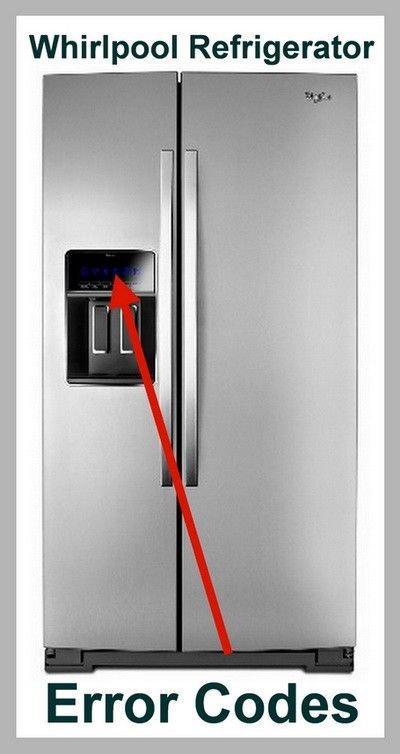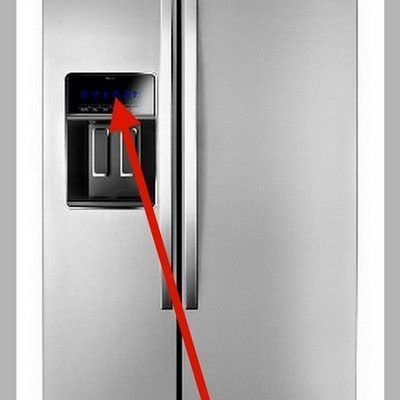
The SE error code on a Whirlpool refrigerator can be a bit alarming, but it’s essentially your fridge’s way of saying, “Hey, something’s not quite right here.” It’s like when your car’s check engine light flickers on, prompting you to investigate further. The SE error is usually related to the sensor or communication issues within the appliance. But don’t sweat it — understanding the possible causes of this error can help you take the right steps to resolve it.
Understanding the SE Error Code
Before tackling any technical issues, it’s crucial to get to know what you’re dealing with. So, what exactly is the SE error code trying to tell you? In simple terms, this code typically signifies a problem with the refrigerator’s sensors. Think of these sensors as the fridge’s eyes and ears, keeping track of temperature and other vital stats to ensure everything stays cool and fresh.
The sensor plays a significant role in maintaining your fridge’s performance, much like a thermostat in your home. If something goes wrong — say, a sensor malfunctions — the fridge can’t operate at its best, leading to potential temperature irregularities. You might notice things not cooling as they should, or perhaps the opposite, with items freezing unexpectedly. Addressing the SE code quickly is essential, as prolonged temperature issues could spoil food, waste energy, and potentially lead to more costly repairs.
Understanding sensor issues doesn’t mean you’ll have to become a tech wizard overnight. It’s more about knowing that certain signals, like the SE code, need attention. It gives you a head start in determining when to call a professional or attempt a simple fix yourself. So, what are these common causes?
Possible Sensor Failures
When you find yourself staring at the SE error code, one of the primary suspects should be the sensors. Much like a smoke detector in your home tries to communicate when there’s smoke, the fridge sensors alert you when they detect a problem. But what could cause these sensors to fail?
Firstly, consider potential electrical issues. If there’s a fault in the wiring or a power surge has occurred, it can disrupt the sensor’s ability to communicate. It’s similar to when a storm knocks out your internet, leaving you unable to connect to anything online. This disruption can hinder the sensor’s functionality, leading the SE code to rear its head.
Next, it’s worth considering physical damage. Over time, components within your fridge may wear down or even become damaged due to regular use and environmental factors. Just like an old phone with a cracked screen might still work, but not perfectly, a compromised sensor may begin misfiring. This can manifest in various ways, from incorrect temperature readings to sporadic error codes.
If the problem seems consistent and the SE error persists, it might indicate a deeper issue within the sensor system itself, possibly requiring professional assessment. At this point, getting a technician involved can help you avoid unnecessary hassle and get expert advice on whether a replacement or repair is needed.
Communication Glitches: More Than Just Sensor Trouble
While sensor failure is a common cause of the SE error, sometimes the issue extends beyond just the sensors. Communication glitches within your fridge’s system can also trigger this code. Imagine trying to have a conversation with someone over a shaky phone line; you might miss important parts of what they’re saying. Similarly, your fridge’s internal communication may falter, causing it to misinterpret data or fail to relay accurate information.
This miscommunication can often arise from malfunctions within the control board — the fridge’s brain, if you will. The control board processes information sent by the sensors, dictating how the appliance should perform. Any errors here can throw a wrench in the works, similar to a computer running a faulty program. These issues can often be intermittent, making them tricky to pin down without proper diagnostics.
If you suspect the control board might be at fault, it’s typically best to reach out to a professional. Much like attempting to repair your car’s engine without the proper know-how, fiddling with the control board can lead to more harm than good. A qualified technician can thoroughly inspect the board and other components, ensuring everything is functioning as it should.
Steps to Address the Error Code
So, what can you do if you’re faced with the SE error code? Thankfully, you don’t have to feel helpless. There are practical steps you can take before calling in reinforcements, starting with a simple reset.
Try unplugging your refrigerator for about five minutes. This is akin to rebooting a lagging computer — sometimes, a fresh start can resolve temporary glitches. After plugging it back in, keep an eye on the display. If the SE error disappears, it may have just been a fleeting issue. However, if it reappears, further investigation is warranted.
Next, check for any obvious signs of damage or disruption. Look for loose wires or visible wear and tear on the sensor connections. If you’re comfortable, gently secure any loose components, ensuring the sensors have a proper connection. Remember, though, safety comes first — if at any point you feel unsure, it’s best to call an expert.
If these initial attempts don’t yield results, consider scheduling a service appointment. A professional technician can perform a comprehensive diagnostic to pinpoint the exact issue. They’ll have the right tools and expertise to fix or replace faulty sensors, control boards, or other problematic parts, restoring your fridge to perfect working order.
Preventing Future Errors
Now that you’re equipped with the basic troubleshooting steps, let’s talk prevention. Just as regular maintenance can keep your car running smoothly, a few proactive measures can help prevent the SE error from cropping up again.
First, ensure your refrigerator is placed in a well-ventilated area. Proper airflow around the fridge helps it maintain consistent temperatures, reducing the likelihood of sensor-related issues. Think of this like ensuring your home’s HVAC system has clear vents — without obstruction, everything runs more efficiently.
Regular cleaning is also crucial. Dust and dirt can accumulate around the coils and sensors, potentially leading to malfunctions. A clean fridge is a happy fridge, so periodically wiping down these areas can improve performance and longevity. It’s akin to regularly changing your car’s oil — a small task that makes a significant impact.
Lastly, consider investing in a surge protector for your appliances. Power surges can wreak havoc on electronic components, including those in your refrigerator. Protecting your fridge from these unexpected spikes is a wise precaution, similar to wearing a helmet when biking — it might not always be necessary, but it can prevent serious damage.
By staying informed and taking these preventative steps, you’re well on your way to maintaining a well-functioning Whirlpool refrigerator that’s free from pesky SE error codes. Should trouble arise again, you’ll know where to start, and with the help of professionals when needed, you can keep your fridge running smoothly for years to come.
